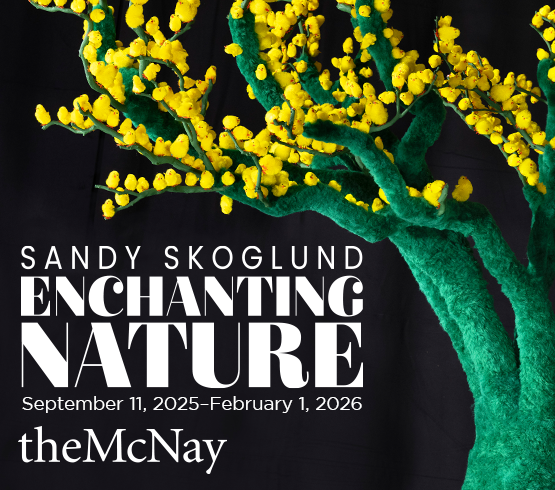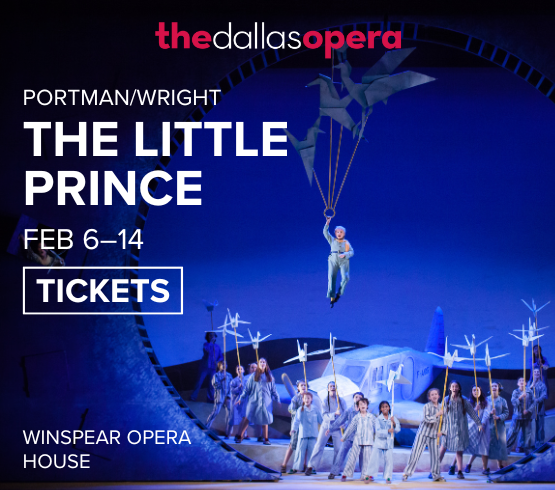Art survives. I’ve used this phrase many times over the years when writing about visual and performing arts in Texas, especially in the midst of hurricanes, floods, freezes, power blackouts, art-funding politics and pandemics. But as an arts connoisseur who also loves to travel, I’ve learned that this need to create art–perhaps as a testament to survival–is intrinsically human. Recently, I found this belief reenforced during a once in a lifetime trip to Cuba.
I was traveling as a guest of long-time Arts and Culture Texas friends, the Austin-based Camiba Cultural Tours. Founded by Troy Campa and René Ibarra, Camiba specializes in taking small groups on trips to the Americas with a focus on learning about the art and authentic culture of a region. From excursions to Colombia, Guatemala, Bolivia, Mexico and even Chicago and northwest Arkansas just this year, they seek to give travelers a deep dive into the history but also creative spirit of each place.
From that first taxi drive from the airport to the small, private hotel, Loma Del Ángel, I could see beneath half a century of communist rule, a layer of Caribbean glamour shines through. Beyond the vintage 50s and 60s cars tooling around Havana–each a remembrance of the height of Detroit automotive design–and the faded but still vibrant blues, pinks and green facades of the colonial architecture, there’s that feeling that Hemingway’s ghost might still clang away on a portable typewriter in his favorite Hotel Ambos Mundos.
Our trip hit many of the staples of any cultural tour to Cuba, including a docent-guided tour of the Museo Nacional de Bellas Artes, one of the largest art museums in Havana. Its outstanding collection of Colonial to Contemporary Cuban art also illustrated how much art and history are intertwined and how collecting and curating may hold a mirror to the politics of any era. We checked off a visit to Ernst Hemingway’s house for all the best 20th century literary gossip and spent one rainy morning exploring the Castle of El Morro, the omnipresent fortress reigning over the port skyline as Havana’s first defense from pirate attacks for three centuries.

1 ⁄8
Tarra Gaines overlooking the Viñales Valley. Photo by Tarra Gaines.

2 ⁄8
Classic cars in front of the Gran Teatro de La Habana (Grand Theatre of Havana). Photo by Tarra Gaines.
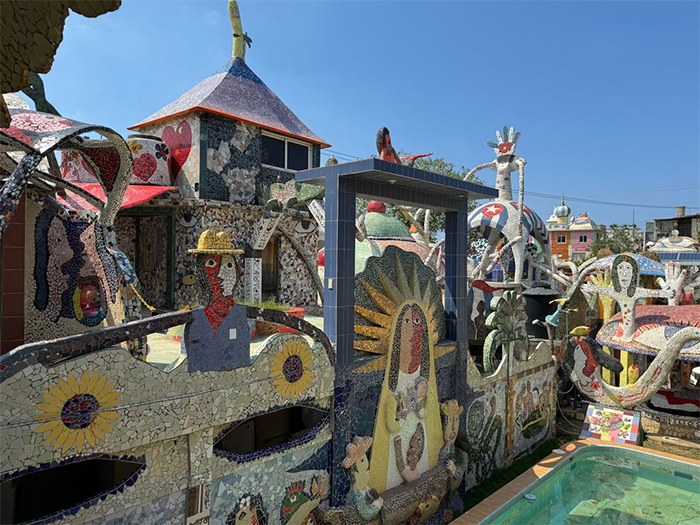
3 ⁄8
Fusterlandia in Havana, Cuba. Photo by Tarra Gaines.

4 ⁄8
National Museum of Contemporary Ceramics in Havana, Cuba. Photo by Tarra Gaines.
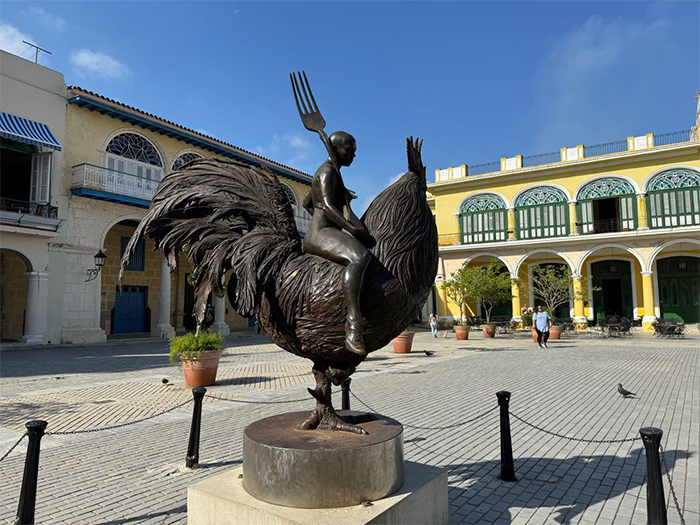
5 ⁄8
Public Art in Old Havana. Photo by Tarra Gaines.
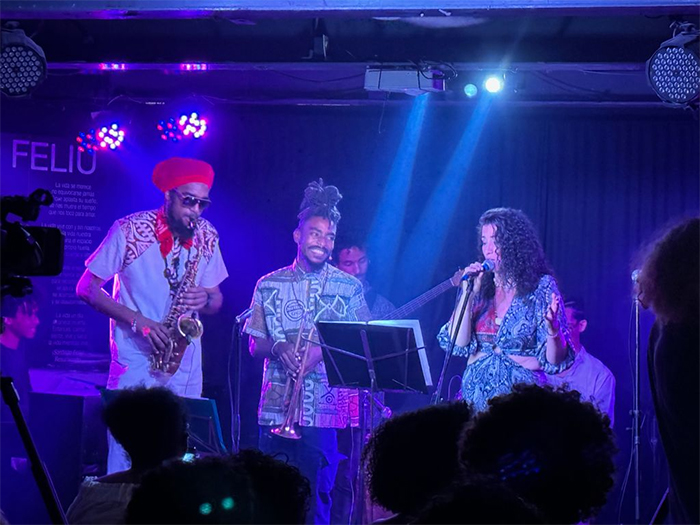
6 ⁄8
Performance at Fabrica de Arte Cubano. Photo by Tarra Gaines.

7 ⁄8
Camiba Cultural Tours co-director René Ibarra at Cuevas de Bellama. Photo courtesy of Camiba Cultural Tours.

8 ⁄8
José González Jogo at his gallery/paper factory, Taller Experimental de Papel Artesanal. Photo by Tarra Gaines.
But the group size and René’s long friendship with many Cuban artists and gallery owners, allowed us to go off the traditional tour-beaten path into small art spaces and even artists’ homes. While we saw tour buses and vans, many filled with European and Chinese tourists, headed into the Viñales Valley, I’m certain none of them made a stop at local surrealist artist Ramon Vasquez’s studio/home for a visit. Certainly, a trip into Old Havana, another UNESCO World Heritage Site, is a must for anyone visiting Cuba. But for our walk along the brick streets and 500-years-old squares, René tapped photographer and owner of the gallery/artisanal paper factory, Taller Experimental de Papel Artesanal, José González Jogo, to be our guide, giving us a view of Old Havana through an artist’s eyes.
That Camiba flexibility also allowed for last-minute requests. When I learned that the Cuban National Ballet would be performing Giselle while we were there. I couldn’t pass up the opportunity to see such a world-renowned company, especially one that has delivered several dancers to the Houston Ballet. With help from José, Rene was able to get us tickets for a truly rare experience for this dance lover.
Later that day, we headed out to the Havana municipality of Playa, where painter and ceramic artist Jose Fuster decided to turn his home into a mosaic wonderland. The whole neighborhood soon followed along. After several decades of ceramic creations, the ever-evolving results are Fusterlandia. With a rainbow riot of color, the mosaic walls, sculptures and buildings depict a rich tapestry of Cuban culture and history, in the forms of people, animals, whimsical creatures, sea and landscapes, all painted in the medium of broken tile.
Along with Fuster’s home and studio, we made a stop a few mosaic blocks away to Marianela Leyva’s home, animal rescue and art gallery. Amid the rescued street dogs and cats in the backyard, folk art and handmade prints for sale on the porch and family rooms of Leyva’s house, it was never quite clear which came first the art or animals. Like many things in Cuba, acts of life and creativity flow together.
The last evening of our trip, we visited a converted cooking oil factory which now houses one of the hottest restaurants in town, El Cocinero, as well as the night/art club, La Fábrica de Arte Cubano. Wandering through the Factory’s vast, yet maze-like spaces, I found intimate to medium-sized performance stages, a retro dance floor space, multiple art galleries and indoor and outdoor food kiosks and bars. A one-stop party shop for all our art viewing and night clubbing needs, it also felt like the culmination of my entire Cuba experience. Even as they sometimes struggle to keep the power on during fuel shortages, art survives and thrives around every corner.
—TARRA GAINES




